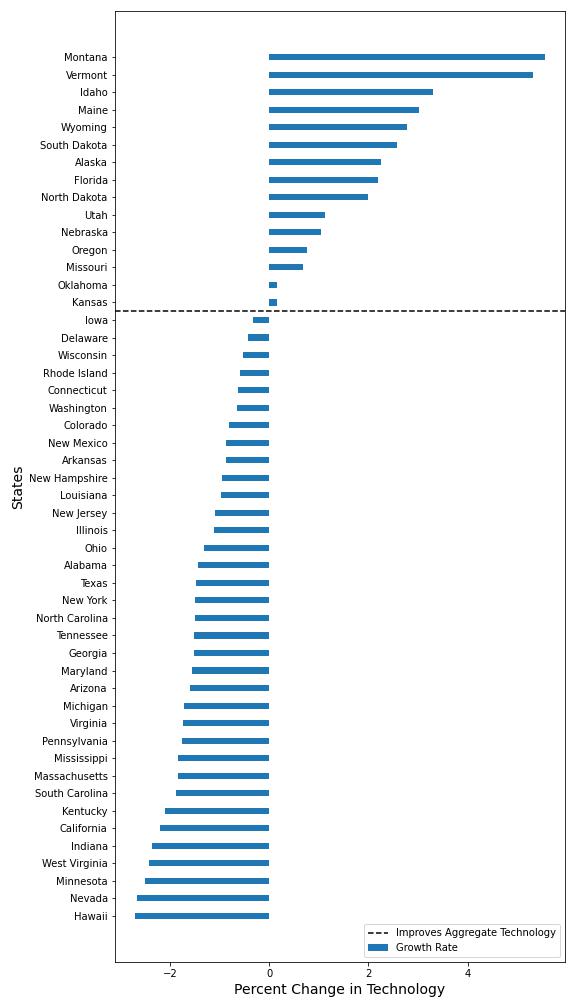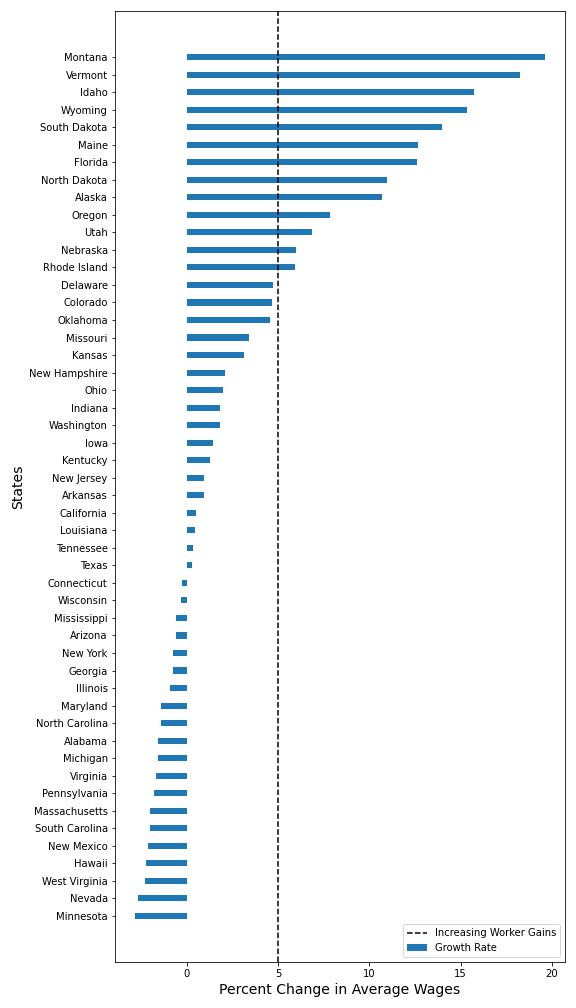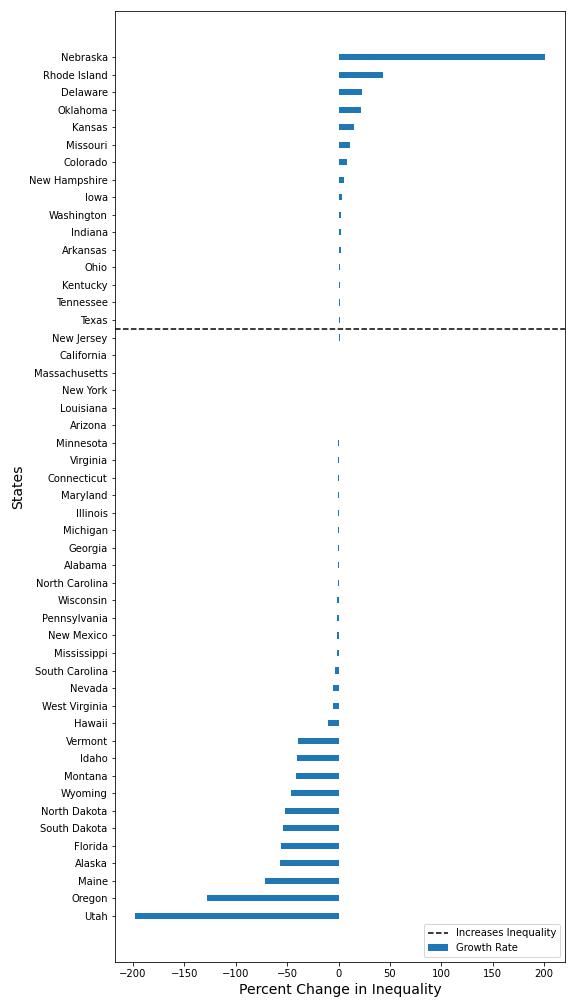Skill Sorting and Productivity
Project Description
We develop models of endogenous technology which centre skill-based worker sorting in its operation. These tools allow us to understand how individuals with various degrees of specialisation and ability end up together in certain industries and firms, giving place to various degrees of firm productivity. Our models can be easily used with standard labour force surveys and provide a framework to assess the impact skill complementarities in productivity.
Nuanced Technology Investment
In an effort to increase productivity, often times policymakers call for increasing investment technology sectors. This requires workers from certain key occupations. With this model, you can now evaluate where these returns are greatest at the regional level. For example, let us allow each state to invest in engineering technologies at a rate of 5%. Where is this investment most worthwhile and what is its impact on key social factors like wages and inequality?
The Business Perspective
- For businesses, we want to know how productivity is positively changed by this injection of skilled workers as well as if that change is experienced broadly across the market. Here we examine how labour productivity changes as well as the average firm’s technology investment.


The Worker Perspective
- While technology investment is often associated with improved well-being, there often concerns surrounding how widely that prosperity is shared. This model also allows us to understand how workers are impacted. Here we examine how average wages and inequality change following our technology investment.


People
Resources
Online repository (upcoming)